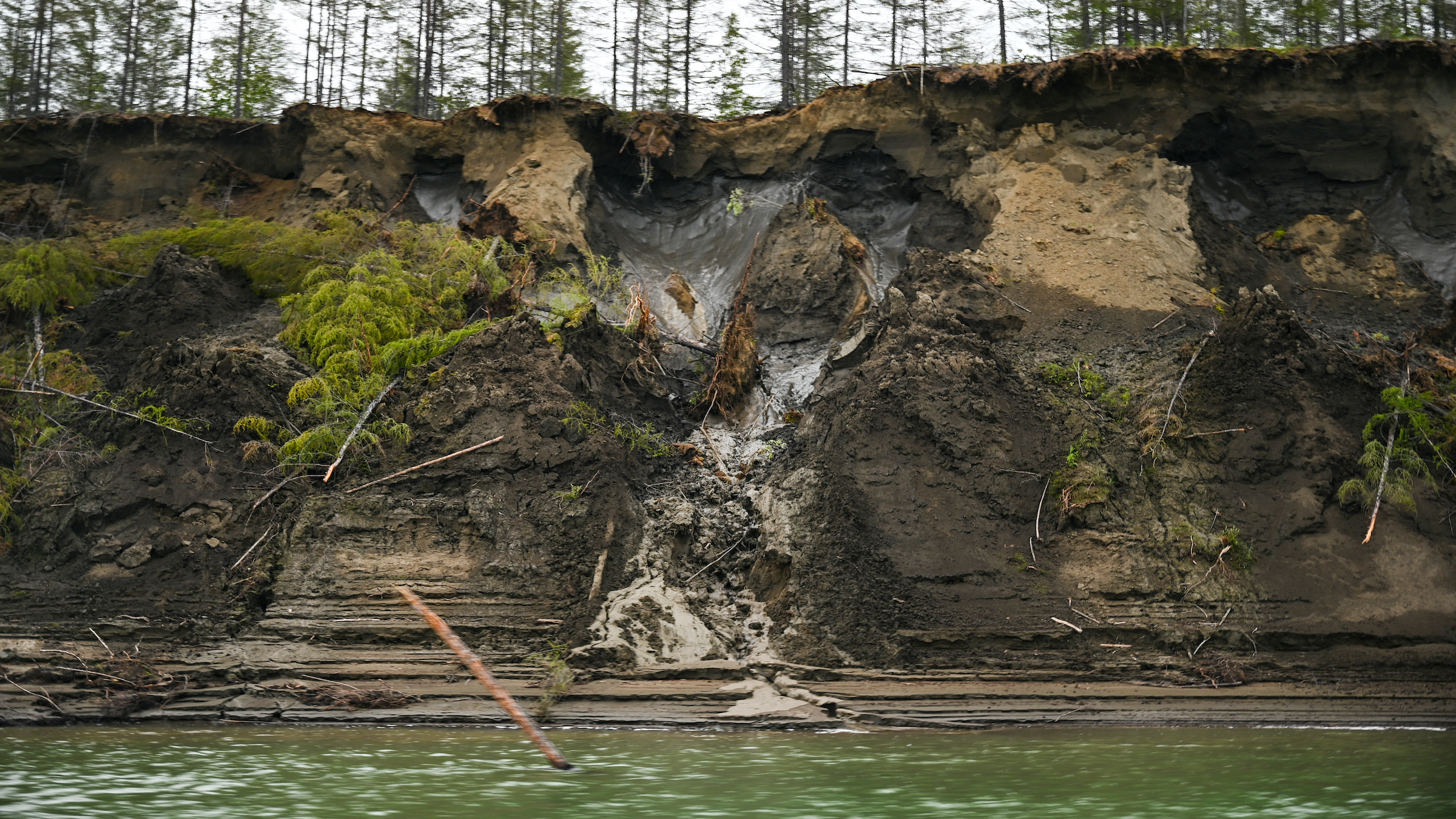'Zombie' viruses have been revived from Siberian permafrost. Could they infect people?
Researchers have isolated viable microbes from melting permafrost after tens of thousands of years. But don't worry; they infect only amoebas.

There is a frozen soup of viruses, bacteria and fungal spores lurking beneath the frigid Arctic soil. Unlike the icy leftovers in the back of your freezer, some of these microbes haven't interacted with a cell since well before ancient Egyptians built the Pyramids of Giza about 4,500 years ago. As climate change continues to cook the planet, however, these permafrost-locked germs are beginning to thaw.
But can newly defrosted microbes "wake up" and infect anything? And how much of a potential threat do they pose to human and environmental health? Those are the questions an international team of scientists began to probe in a new study, published online Feb. 18 in the journal Viruses.
Disease outbreaks from permafrost are not unprecedented. Siberian reindeer herds periodically contract anthrax from bacteria in melted permafrost, according to research published in 2021 in the journal Frontiers in Veterinary Science, and the issue has affected a handful of humans in these regions as well.
For the new study, which has not been peer-reviewed, the researchers isolated 13 newly described viruses from seven permafrost samples and two water samples taken from Siberian rivers. Three of the viruses — named Megavirus mammoth, Pithovirus mammoth and Pandoravirus mammoth — were found inside 27,000-year-old petrified mammoth wool. Another was discovered in the frozen intestines of an ancient Siberian wolf.
Related: The deadliest viruses in history
In a contained lab setting, the scientists carefully thawed the microbes and sequenced their genomes. Then, the researchers infected amoeba cells with the newly awakened viruses. Despite being up to 48,000 years old, several of the viruses were able to replicate within the amoebas, causing them to burst open and release fresh viral particles.
"The ones we revived are no danger at all; they only infect amoeba," Jean-Michel Claverie, a computational microbiologist at Aix-Marseille University in France and co-author of the new study, told Live Science in an email. "But their presence and infectivity suggests that ancient viruses infecting animals/humans could still be infectious."
Sign up for the Live Science daily newsletter now
Get the world’s most fascinating discoveries delivered straight to your inbox.
The researchers focused on amoeba-infecting viruses because amoebas make good model organisms and because there would be minimal risk of accidental spillover to lab technicians. "We are using [the amoeba's] billion years of evolutionary distance with humans and other mammals as the best possible protection," they wrote in the paper.
Previous studies of viruses locked within Arctic permafrost have been few and far between. However, the authors said this study disproves an older hypothesis that permafrost contains few viable microbes; in addition to the viruses they revived, the team found trace evidence of numerous other species, including some related to known human pathogens, such as poxviruses and herpesviruses.
But if one of these strains did awaken and infect humans, modern vaccines likely would offer some protection. The biggest risk, according to the authors, is from unknown viruses. Like SARS-CoV-2, the pathogen responsible for COVID-19, these germs have the potential to spread rapidly through a population that lacks natural immunity, triggering a pandemic. Such a virus would need to be studied and understood even as it infected people, making vaccine development tricky.
As of now, political upheaval in the region has halted the collection of new permafrost samples. "Because of the Russia-Ukraine war, all our collaborations are stopped now," Claverie explained, adding that his lab will continue to study the viruses they have. And they hope that companies setting up drilling and mining operations on the Siberian permafrost take heed and proceed with caution — for example, by monitoring for unusual diseases and setting up appropriate quarantine facilities.
"We believe the point is made that viruses of any kind can survive in permafrost," Claverie said.
Editor's note: Originally published on Dec. 6, 2022 and updated at 11:33 a.m. EST on March 10, 2023 to note that the study, which was previously posted on the preprint database bioRxiv, had been published on Feb. 18, 2023 in Virus, a peer-reviewed journal.

Joanna Thompson is a science journalist and runner based in New York. She holds a B.S. in Zoology and a B.A. in Creative Writing from North Carolina State University, as well as a Master's in Science Journalism from NYU's Science, Health and Environmental Reporting Program. Find more of her work in Scientific American, The Daily Beast, Atlas Obscura or Audubon Magazine.










